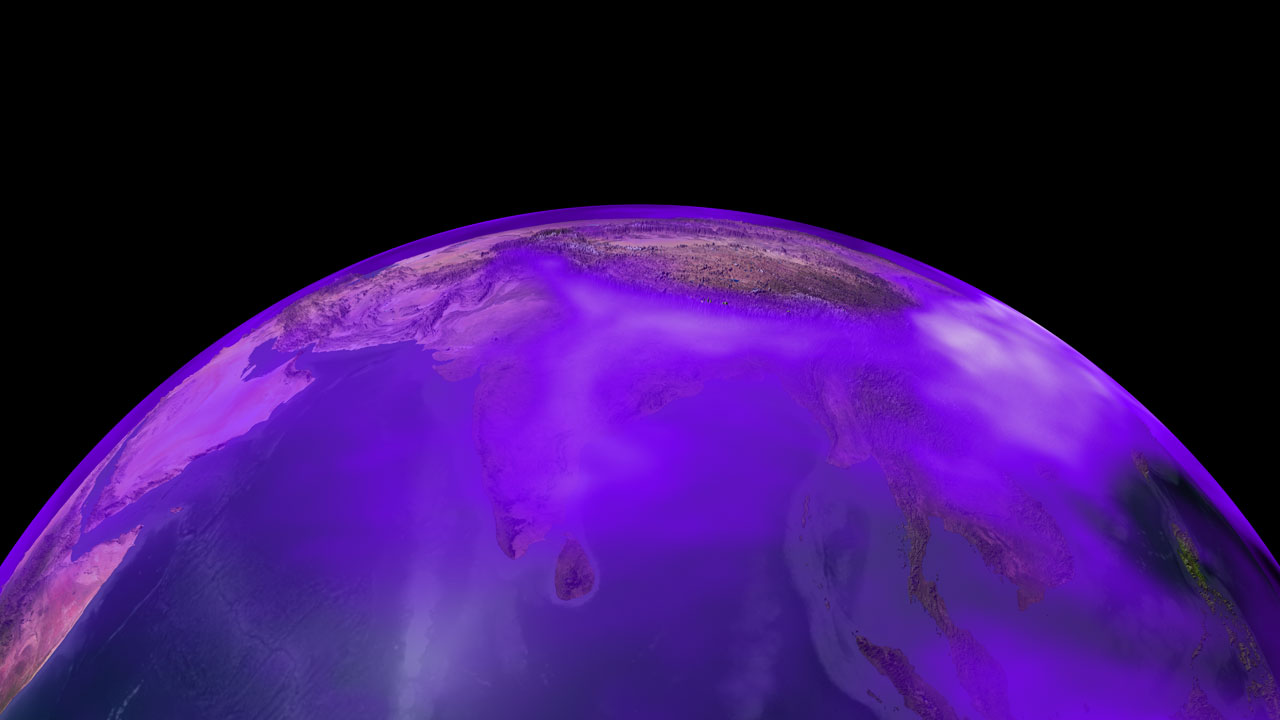Global Transport of Black Carbon
Tiny air pollution particles commonly called soot, but also known as black carbon, are in the air and on the move throughout our planet. Black carbon enters the air when fossil fuels and biofuels, such as coal, wood, and diesel are burned. Since black carbon readily absorbs heat from sunlight, the particles can affect Earth's climate, especially on a regional scale. Though global distribution of soot remains difficult to measure, NASA researchers use satellite data and computer models to better understand how these short-lived particles influence Earth's climate, cryosphere, and clouds. This scientific data visualization uses data from the GEOS5 GOCART climate model to show black carbon's atmospheric concentration from August to November in 2009.
A flat map version of this animation is available.
This visualziation was created in support of a presentation at the Fall 2009 American Geophysical Union (AGU) conference in San Fransisco, CA.
Black carbon visualization without colorbar overlay
Black carbon visualization with colorbar overlay

Black carbon colorbar: Aerosol Optical Thickness ranging non-linearly from 0.002 (transparent) to 0.02 (purple) 0.2 (whte)

Black crabon over the Tibetan Plateau on August 3, 2009

Black carbon over the Tibetan Plateau on September 26, 2009

Black carbon over the Tibetan Plateau on November 18, 2009

Black carbon on September 26, 2009 - global view
Credits
Please give credit for this item to:
NASA/Goddard Space Flight Center Scientific Visualization Studio
The Blue Marble Next Generation data is courtesy of Reto Stockli (NASA/GSFC) and NASA's Earth Observatory.
-
Animators
- Greg Shirah (NASA/GSFC)
- Horace Mitchell (NASA/GSFC)
-
Producer
- Maria Frostic (UMBC)
-
Scientist
- William K. Lau (NASA/GSFC)
Release date
This page was originally published on Sunday, December 13, 2009.
This page was last updated on Sunday, June 23, 2024 at 10:01 PM EDT.
Missions
This page is related to the following missions:Datasets used
-
BMNG (Blue Marble: Next Generation) [Terra and Aqua: MODIS]
ID: 508Credit: The Blue Marble data is courtesy of Reto Stockli (NASA/GSFC).
This dataset can be found at: http://earthobservatory.nasa.gov/Newsroom/BlueMarble/
See all pages that use this dataset -
GEOS Atmospheric Model
ID: 665
Note: While we identify the data sets used on this page, we do not store any further details, nor the data sets themselves on our site.
